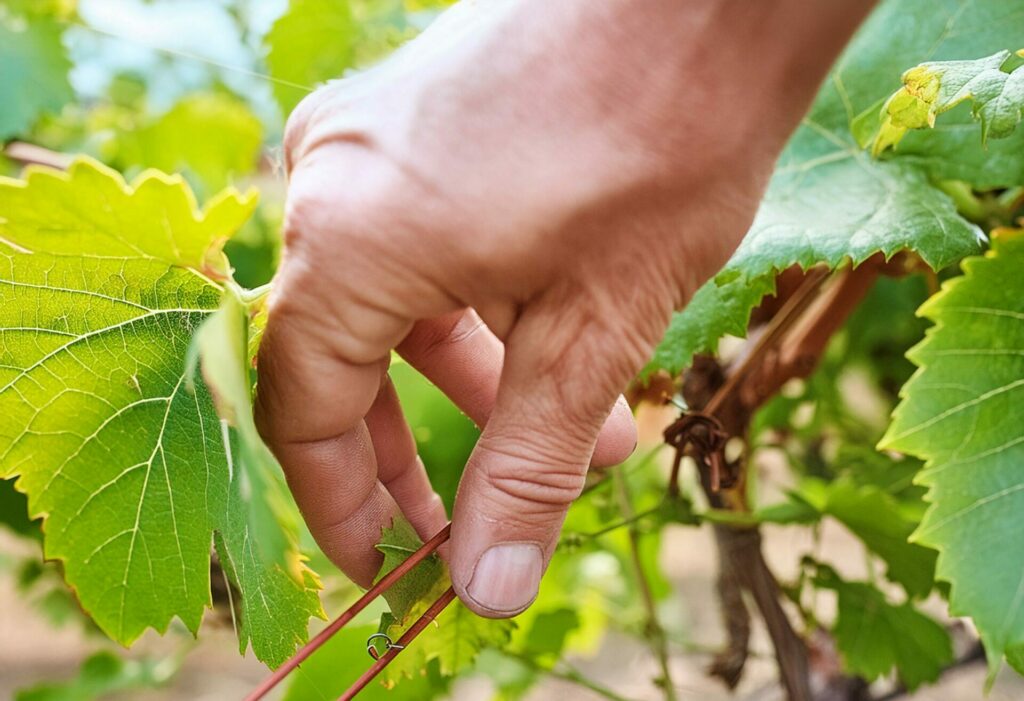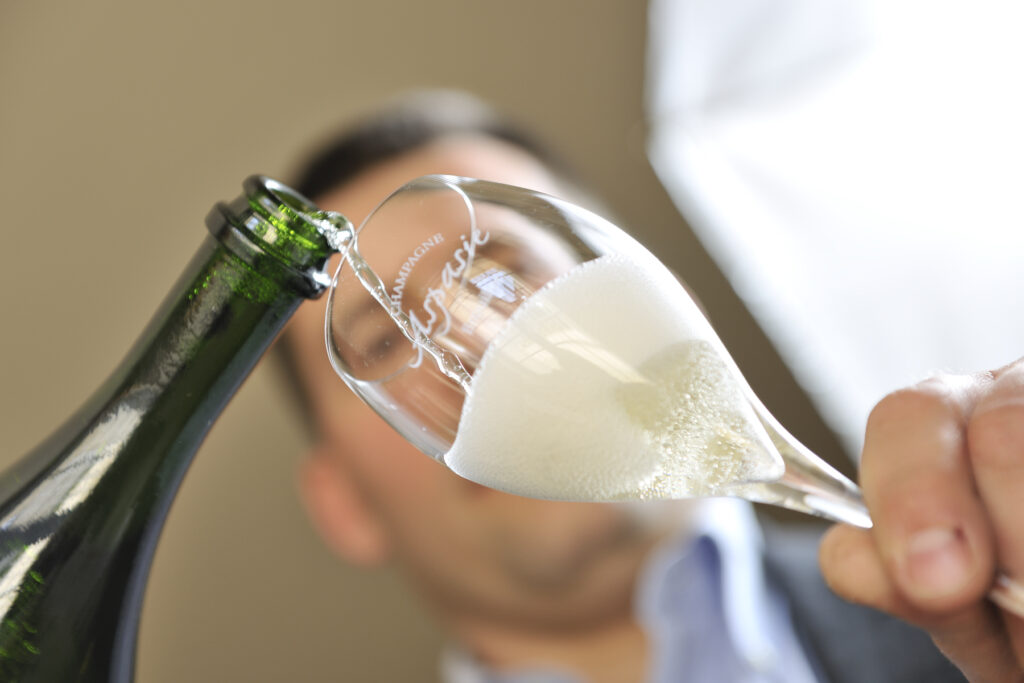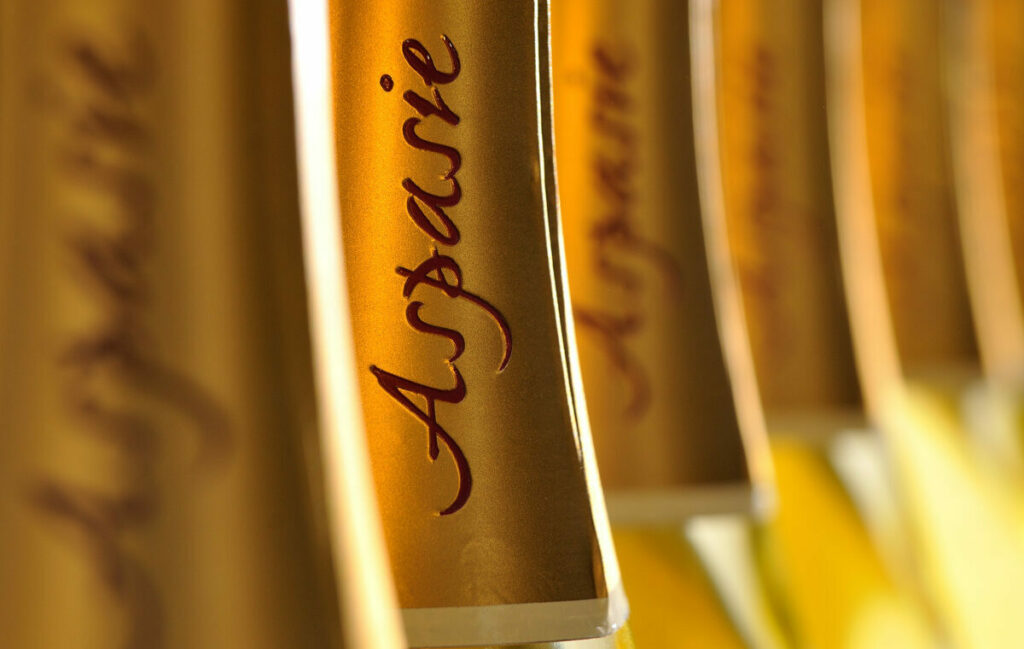Vine trellising

As summer approaches, the vineyard enters an important phase of its annual cycle. Among the many tasks, trellising stands out for its importance for the health and productivity of the vine. Discover this meticulous and essential technique which allows you to “let the bunches breathe”.
What is trellising?
Trellising consists of using two wires passed through staples attached to stakes to contain and guide the branches of the vine. The branches are carefully distributed between these two wires, thus allowing better organization and ventilation of the plant.
Training objectives
The main objective of trellising is to separate the branches to prevent them from overlapping and intertwining. This careful organization guarantees each branch enough space to grow freely and in good health.
In addition, trellising optimizes the leaves’ exposure to the sun. By spacing the leaves apart, they can capture the maximum amount of sunlight, essential for photosynthesis and proper ripening of the bunches.
Finally, this technique improves air circulation. Proper aeration of leaves and bunches reduces the risk of disease and rot, promoting better overall vine health.
The benefits of trellising
Training allows each leaf to be exposed to the sun, thus optimizing the photosynthesis process. Good light exposure is crucial for sugar production in the bunches, determining the quality and sugar content of the grapes.
Manual intervention
Trellising is an artisanal job, carried out entirely by hand. Each branch is carefully placed between the lifting wires, a task that requires time and patience. This human intervention guarantees particular attention to each vine, thus ensuring harmonious and balanced growth of the plant.
Also read

Champagne: Elevating Life’s Celebrations, Big and Small
Bien plus qu’un vin de fête, le champagne sublime les moments simples comme les grandes occasions. Découvrez comment les cuvées de Champagne Aspasie transforment chaque instant en souvenir mémorable.

Goat Cheese Mousse, Cucumber, and Mint Verrines
Freshness, finesse, and elegance: our Champagne Brut Blanc de Blancs is the ideal companion for refined appetizers. Made from 100% Chardonnay, it delights with its liveliness, citrus notes, and delicate minerality…

The packaging of our bottles: The final touch before shipping
Before leaving our house and joining the lovers of fine bubbles, each bottle of Champagne Aspasie goes through a final stage: dressing…

